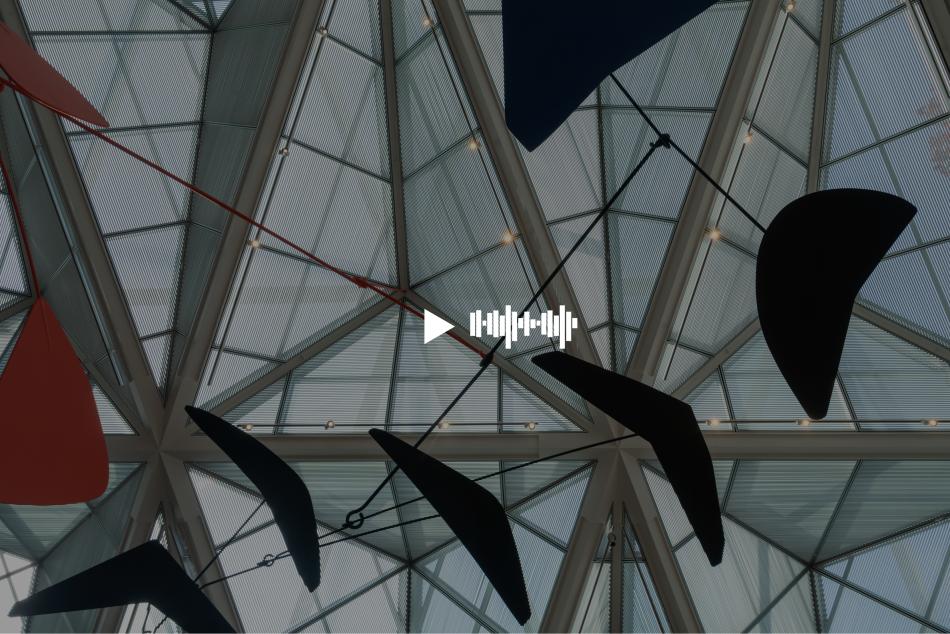HARRY COOPER:
This is one of Giacometti’s great works. I think what’s unusual about this is that it’s flat; it’s something we look down on. It is not in the usual space of sculpture. It looks much more like a game board.
NARRATOR:
Harry Cooper, curator and head of modern art.
HARRY COOPER:
An equally good title might have been “Let’s Play,” because the work consists of a number of movable elements. Yet the title is No More Play, which has a darkness to it. I think we have these holes, these lids, coffins. The figures set up like little monuments coming up above this marble deck. Most obviously, there’s a suggestion of death, the end of something, the end of play.
NARRATOR:
Look at the adjacent piece too, also by Giacometti, The Invisible Object: Hands Holding the Void. It shares the same sense of disquiet and confinement ... and is thought to reference everything from the artist’s recently deceased father to Egyptian funerary art.
HARRY COOPER:
We don’t really know what kind of interactions are happening on that game board, nor do we know what this figure is doing, this upright figure with hands holding the void, holding nothing. It’s kind of an alien and seems to be trying to communicate something to us from another world. Maybe that’s not a bad way to think about both of these very mysterious sculptures.




